|
The story begins in Atlanta, Georgia on
May 8, 1886, when a pharmacist called Dr John Smith Pemberton
first mixed Coca-Cola in his back yard. The
formula, which was made from carbonated water, cane sugar
syrup, caffeine, extracts of Kola nuts and cola leaves, was
brought to the nearby Jacobs' Pharmacy where it made its debut
as a soft drink the same day, selling for only 5 cents. His
bookkeeper named this drink "Coca-Cola" after the first two
ingredients. And the same distinctive script he wrote it in, is
the same logo they use to this day.
|
|
In January 1893 Coca-Cola was registered with the U.S. patent
office. Later on in 1915 the Root glass company created the
famous contour glass bottle for Coca-Cola in 1915.
In 1917 Coca-Cola was found to be
the world's most recognized trademark with a record of 3 million
Coke's sold per day. Unfortunately, John Pemberton fell ill, and
did not live to see his product’s success.
|
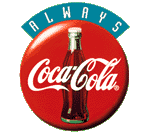 |
. Sadly, in the
first year of Coke’s existance, Pemberton and his partner only
made $50. Pemberton sold two-thirds of his business in 1888 to
cover his losses and keep the business afloat.
He died later that
year, and Mr Asa Candler, an Atlanta druggist, purchased total
interest in Coca-cola for an unbelievable $2 300 in 1891. In
1891, Candler and his brother formed the Coca-Cola Company.
|
|

|
| In 1893 Candler
registered Coca-Cola as a patented trademark. He also responded
to growing concerns over the dangers of cocaine by reducing the
amount of coca in the drink to a trace. However, he kept some
coca extract in Coca-Cola so the name would accurately describe
the drink. Candler only had a patent on the name, and not the
drink syrup-that is, the drink's base, containing all the
ingredients minus the carbonated water. He figured that keeping
the coca in his formula would legally allow the company to
distinguish its drink from imitations. Other companies also
produced soda drinks made with kola nut extracts. In particular,
the Pepsi-Cola Company and its cola of the same name would
become Coca-Cola's major competitor over the next few decades.
Candler also spent more than $11,000 on his first
massive advertising campaign in 1892. The Coca-Cola logo
appeared across the country, painted as a mural on walls;
displayed on posters and soda fountains where the drink was
served; and imprinted on widely marketed, common household
items, such as calendars and drinking glasses. In addition,
Candler was the first person ever to use coupons to gain
customers for a product. He distributed flyers offering free
soda fountain glasses of Coca-Cola to people visiting his
drugstore.
In 1894 the Coca-Cola company opened its first Coke syrup
production plant outside of Atlanta, in Dallas, Texas. That same
year a candy store owner in Vicksburg, Mississippi, installed
bottling machines and produced the first bottled Coke. It had
previously been sold only at soda fountains. By 1895 the drink
was sold in all U.S. states and territories.
In 1899 lawyers Benjamin Thomas and Joseph Whitehead of
Chattanooga, Tennessee, bought the exclusive rights to
distribute Coke syrup to bottlers throughout most of the country
for only one dollar. At the time, Candler saw little profit in
bottling, and was more than willing to give up that part of the
business.
In 1915 the Root Glass Company created a contour glass
bottle for Coke, its design based on the curvature of a coca
bean. This bottle design became a Coke trademark worldwide. The
same year, Candler retired from the company, passing it on to
his children and moving into politics. He was elected mayor of
Atlanta in 1916.
In 1919 the Candler family sold Coca-Cola to
businessman Ernest Woodruff of Columbus, Georgia, for $25
million. Woodruff's son, Robert, was elected company president
in 1923. Robert Woodruff was a skilled marketer, and he put more
of the compancompany's resources into market research than into
manufacturing Coke. Two new Coke slogans were developed under
Woodruff: "The Pause that Refreshes" (1929) and "It's the Real
Thing" (1941).
|
|
During World War II (1939-1945),
Woodruff also boosted Coke's popular image in the United States
by pledging that his company would provide Coke to every U.S.
soldier. The company did not limit itself, however, to only
doing business that would increase its success in America. In
the period leading up to the war, between 1930 and 1936, it had
set up a division of the company in Germany, and it continued
that venture during the war. It recreated its image as a German
company and allowed the Germans to produce all but two, secret,
Coca-Cola ingredients in their own factories.
|
|
In 1941 the German company's president, Max Keith,
developed Fanta orange soda using orange flavoring and all the
German-made Coke ingredients. The Coca-Cola Company's wartime
efforts helped it expand its global market, often with the
economic support of the U.S. government.
By the end of the war in 1945, it
had established 64 overseas bottling plants. That same year the
company registered a patent on Coca-Cola's popular nickname,
Coke.
|
|
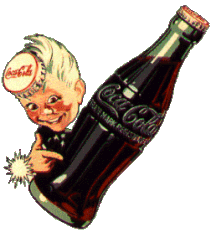
|
|
In 1955
Robert Woodruff retired as the Coca-Cola Company's president.
Candler and Woodruff are remembered as the two most important
figures in the company's early growth, both for their
contributions to the company and their considerable fortunes
donated to the city of Atlanta. After Woodruff's departure, the
company began to diversify by producing new products, acquiring
new businesses, and entering new international markets.
In 1960 the Coca-Cola Company purchased the Minute Maid Corp.,
producer of fruit juices, and began offering Coke in cans.
Between 1960 and 1963 it also launched four new soft drinks in
the United States: Fanta, an orange soda; Sprite, a lemon-lime
soda; Tab, a diet cola; and Fresca, a diet grapefruit-flavored
soda. In 1964 the company acquired the Duncan Foods Corp. In
1967 it created the Coca-Cola Foods Division by merging its
Duncan and Minute Maid operations. |
|
|
|
In the late 1960s,
Coca-Cola faced difficulties in some of its foreign markets.
When the company built a bottling plant in Israel at the outset
of the Arab-Israeli War, the governments of all Arab League
nations banned the production and sale of Coke. A year later the
company withdrew from its markets in India when that country's
government requested that Coca-Cola reduce its equity in joint
ventures to 40 percent. The company refused to relinquish so
much control over those operations.
In 1977 Coca-Cola began packaging Coke and other drinks in
two-liter plastic bottles. The popularity of these large bottles
grew over time, and their sales earned the company new profits,
primarily in small specialty and convenience stores. In 1982 the
company introduced Diet Coke, which soon became the best-selling
diet soft drink in the world. |
|

|
|
Also in 1982 Coca-Cola purchased the
motion-picture company Columbia Pictures Industries, Inc., also
known as Tri-Star Pictures, for almost $700 million. Two years
later, the company sold off its Columbia holdings and other
media aquisitions to Sony Corporation for over $1.5 billion.
By 1984 Pepsi-Cola had gained on Coke's previous domination of
the U.S. market to the point that the two had almost equal
sales. In an attempt to regain market dominance, the company
attempted the first-ever revision of the original Coke recipe.
The American public largely rejected New Coke, and so the
company quickly returned to also producing the old recipe under
the name Coca-Cola Classic.
|
|
In 1986 The Coca-Cola Company
consolidated all of its nonfranchised U.S. bottling operations
as Coca-Cola Enterprises, Inc. The new company began acquiring
independent bottling companies, a venture that grew into the
world's largest bottler of soft drinks by 1988. While Coca-Cola
Enterprises distributes over half of all Coca-Cola products in
the United States, small franchise businesses continue to
bottle, can, and distribute the company's drinks worldwide.
|
|
In 1987 the Coca-Cola Company was listed in the prestigious Dow
Jones Industrial Averages index of stock market performance. Its
stock is traded on the New York Stock Exchange. Coca-Cola and
PepsiCo products occupied nine of the top ten spots in the U.S.
soft drink market in the mid-1990s. Worldwide, Coca-Cola ranked
first in soft drink sales, and the company earned almost 80
percent of its profits from international sales. |
|
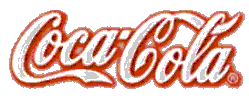
|
|

|
30
pounds of sugar
2 gallons of water
2 pints of lime juice
4 ounces of citrate of caffeine
2 ounces of citric acid
1 ounce of extract of vanilla
6 grams (3/4 ounce) of fluid extract of cola
6 grams of fluid extract of coca nuts
Carbonated water, to taste (viscosity?)
|
-
Mountain Dew - 55.0
-
Diet Mountain Dew - 55.0
-
Mello Yellow - 52.8
-
Tab - 46.8
-
Coca-Cola - 45.6
-
Diet Cola - 45.6
-
Dr. Pepper - 39.6
-
Pepsi Cola - 37.2
-
Aspen - 36.0
-
Diet Pepsi - 35.4
-
7 Up - 0
|
|

|
|

|
|
-
1886: "Drink Coca-Cola"
-
1904: "Delicious and
Refreshing"
-
1905: "Coca-Cola Revives and
Sustains"
-
1906: "The Great National
Temperance"
-
1917: "Three Million a Day"
-
1922: "Thirst knows no
season"
-
1925: "Six million a day"
-
1927: "Around the corner from
everywhere"
-
1929: "The pause that
refreshes"
-
1932: "Ice-cold sunshine"
-
1938: "The best friend thirst
ever had"
-
1939: "Coca-Cola goes along"
-
1942: "Wherever you are,
whatever you do, wherever you may be, when you think of
refreshment, think of ice-cold Coca-Cola"
-
1942: "The only thing like
Coca-Cola is Coca-Cola itself. It's the real thing"
-
1948: "Where there's Coke
there's hospitality"
-
1949: "Coca-Cola ... along
the highway to anywhere"
-
1952: "What you want is a
Coke"
-
1956: "Coca-Cola ... making
good things taste better"
-
1957: "Sign of good taste"
-
1958: "The cold, crisp taste
of Coke"
-
1959: "Be Really refreshed"
-
1963: "Things go better with
Coke"
-
1970: "It's the Real Thing"
-
1971: "I'd like to buy the
world a Coke"
-
1975: "Look up America"
-
1976: "Coke adds life"
-
1979: "Have a coke and a
smile"
-
1982: "Coke is it!"
-
1985: "We've got a Taste for
You (Coca-Cola and Coca-Cola classic) America's Real Choice
-
1986: "Catch the wave
(Coca-Cola) Red White & You (Coca-Cola classic)
-
1989: "Can't Beat the Feeling"
-
1990: "Can't beat the Real
Thing"
-
1993: "Taste It All"
-
1993: "Always Coca-Cola"
|
|

|
Coca-Cola® classic
caffeine-free Coca-Cola® classic
diet Coke®
caffeine-free diet Coke®
Cherry Coca-Cola®
diet Cherry Coca-Cola®
Sprite®
diet Sprite®
|

|
|

|
Barq's® rootbeer
diet Barq's® root beer
Barq's® creme sodas
diet Barq's® creme sodas
Citra™
Fanta®
Fresca®
Fruitopia®
|

|
|

|
Hi-C®
Master Pour™
Mello Yello®
diet Mello Yello®
Minute Maid® soft drinks and juices
diet Minute Maid® orange soft drink
Mr Pibb®
diet Mr Pibb®
|

|
|

|
Nestea® iced teas
diet Nestea® iced tea
Cool from Nestea®
diet Cool from Nestea®
POWERaDE®
Santiba®
Surge™
TAB®
|

|
|

|
The Minute Maid Company..
Minute Maid® Premium Orange Juice
Minute Maid® Premium Juices, Lemonades and Fruit Punches
Minute Maid® Soft Frozen Lemonade
Hi-C®
Five Alive®
Bright & Early®
Bacardi® Tropical Fruit Mixers
|

|
|
|
|
|

|
|
1886 - Coca-Cola
1960 - Fanta (All flavours)
1961 - Sprite
1963 - TAB
1966 - Fresca
1972 - Mr Pibb
1974 - Sugar-free Sprite
1979 - Mello Yello, Ramblin Root Beer
1982 - Diet Coke
1983 - Caffeine-free Coca-Cola, Caffiene-free Diet Coke,
Caffiene-free TAB, Sugar-free Sprite renamed Diet Sprite
1984 - Diet Fanta
1985 - Cherry Coke, Coca-Cola with a new taste, Coca-Cola
Classic
1986 - Diet Cherry Coke
1987 - Minute Maid Orange soft drink, Diet Minute Maid
Orange soft drink, Minute Maid Lemon-Lime soft drink, Diet
Minute Maid Lemon-Lime soft drink
1989 - Diet Mello Yello
1990 - Caffeine-free Coca-Cola Classic, POWERaDE
1992 - New Coke renamed Coke II, Nestea
1993 - Minute Maid juices
1994 - Fruitopia
|
|

|
 |
|
-
Mexico and Iceland have
the highest per capita consumption of Coca-Cola.
-
Coca-Cola translated to
Chinese means, "To make mouth happy".
-
Every second over 7,000
Coca-Cola products are consumed.
-
If all the Coca-Cola ever
produced were in 6 1/2 oz. bottles and placed end to end
they would wrap arount the earth more than 11,863 times.
-
The tallest Coca-Cola
bottling p lants
are in Hong Kong. The plant in Quarry Bay is 17 floors, and
the plant in Shatin is 25 floors.
-
The bottling plant at the
highest elevation in the world is located in Bolivia, at
12,000 feet.
-
The world's longest
Coca-Cola truck is in Sweden. It is 79 feet long with a
four-axle trailer.
-
The best selling
non-carbonated soft drink in Japan is a product of The
Coca-Cola Company named "Georgia", a coffee flavored
beverage.
-
The Varsity Restaurant in
Atlanta, Georgia, has earned the distinction of serving the
highest volume of Coca-Cola anywhere. It dispenses nearly 3
million servings of Coca-Cola annually.
-
During 1886, sales
averaged nine drinks per day (total -- not per person). Most
recently, sales of Company products were more than 411
million drinks per day (total -- not per person).
-
200 billion servings of
Coca-Cola would fill 213,000 Olympic-sized swimming pools.
-
In 1894, the first syrup
plant outside of Atlanta was opened in Dallas.
-
In 1928, sales of bottled
Coca-Cola surpassed fountain sales for the first time.
-
If all of the Coca-Cola
sold in 1994 were in 8-ounce bottles laid end-to-end, those
bottles would reach to the moon and back 76 times.
|
-
In 1969, the code name, "Project Arden," was
used for the introduction of a new graphic look for The
Coca-Cola Company. The result? A consistent identity for
packaging, advertising -- everything -- incorporating the
signature Dynamic Ribbon.
-
Coca-Cola syrup was first shipped in used
whiskey kegs and barrels -- but they were repainted red to
give them a distinctive mark.
-
The greater Mexico City bottler produces the
greatest volume of any Coca-Cola bottler on the globe.
-
The consumption of Coca-Cola classic in the
United States exceeds each of the following: bottled water,
juices, powdered drinks, wine and distilled spirits.
-
It took 58 years -- until 1944 -- to sell
the first billion gallons of Coca-Cola syrup. Today, that
billion gallon mark falls every 7-1/2 months.
-
Cuba and Panama were the first two countries
to bottle Coca-Cola outside the United States.
-
If the Coca-Cola company constructed a sign
like the ones McDonald's uses to count their millions of
customers, by 1983 it would have read "over 1 trillion
served."
-
Coca-Cola trucks travel over 1,000,000 miles
a day to supply consumers with soft drinks.
-
John Pemberton walked the first gallon of
Coca-Cola syrup to Jacob's Pharmacy on May 8, 1886. In the
rain. Uphill. Both ways. Today, the company and its
bottlers rely on the largest commercial fleet in the world.
-
In 1894, the first syrup plant outside of
Atlanta was opened in Dallas.
-
If all the Coca-Cola vending machines in the
U.S. were stacked one on top of another, the pile would be
over 450 miles high.
-
If all of The Coca-Cola Company products
sold in 1994 were flowing over Niagara Falls at its normal
rate of 1.5 billion gallons per second, the falls would flow
for 3 hours.
-
25 gallons of syrup were sold in 1886,
compared to 1.6 billion gallons in 1985.
-
In 1886, Frank Robinson used his own pen and
ink to script the first Coca-Cola trademark. Today,
Coca-Cola is the most recognized trademark in the world,
spoken in 80 languages.
-
If one bottle could be made large enough to
contain all the Coca-Cola ever produced, it would be 6,365
feet high and 1,930 feet wide. A person of proportionate
size to the bottle would be a giant 10.9 miles tall and
weigh over two million pounds.
-
If all the Coca-Cola ever produced was in
normal bottles placed end-to-end, they would wrap the earth
4,712 times.
-
Coca-Cola is the world's most recognizable
trademark...recognized by 94% of the world's population.
-
The highly confidential formula is as much a
secret today as it was 100 years ago. Only a few trusted
company employees know its true contents, proper order and
measure of mixing. The formula, known as merchandise "7X",
is kept in a box in a special security vault in a bank in
the United States.
|
|

|
|

|
For God, Country and
Coca-Cola. A book written by Mark Pendergast.
The unauthorised history of the Great American Soft Drink and
the company that makes it.
|
|

|
A Coca-Cola
collectibles Price Guide, written by Petretti. |
|

|
A Classic Coca-Cola Serving
Trays book. |
| All Coca-Cola Company
trademarks and logos used in this site, are property of the
Coca-Cola company. Coca-Cola companies rights are reserved. I am
no way affliated with the Coca-Cola Company. This site was designed
for educational purposes only. |
Special thanks to
http://www.knet.co.za/cocacola/Default.htm
|
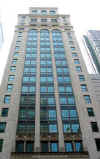
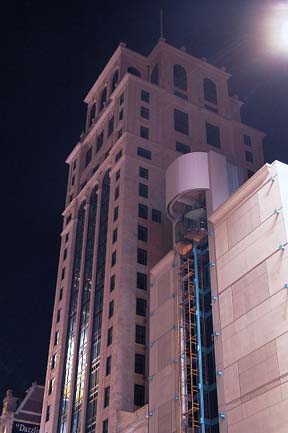
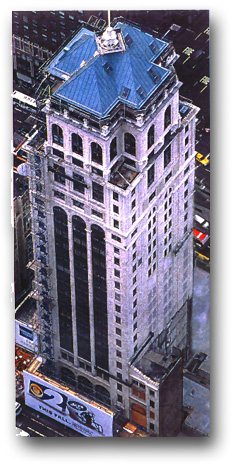
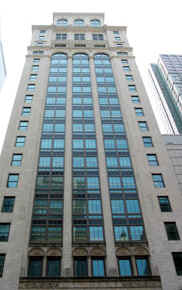
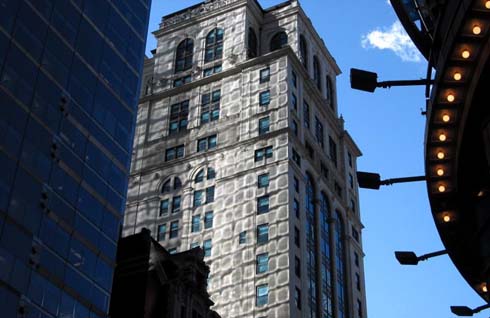
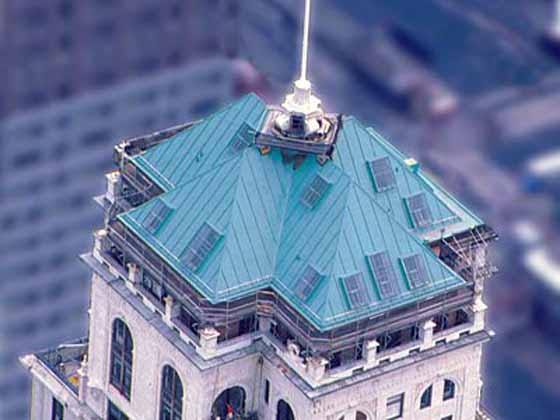
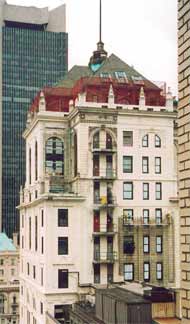 The
Candler Building, New York City
The
Candler Building, New York City